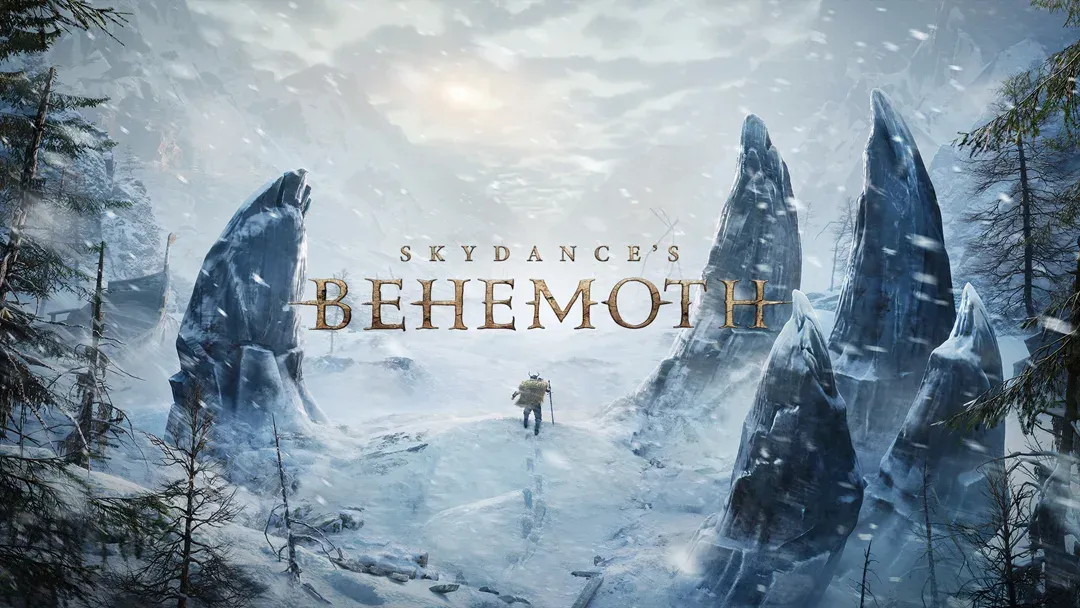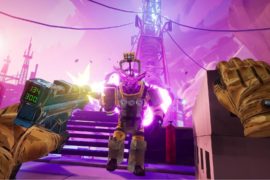Skydance’s Behemoth builds upon Saints & Sinners combat foundations well with a promising VR fantasy action RPG. Read on for our full impressions and developer Q&A.
It’s hard to deny Skydance Games’ impact on VR gaming. Four years on, The Walking Dead: Saints & Sinners remains an essential experience that excels with its tactile melee combat, one that still delivers a refreshing change of pace from other undead action games. Skydance’s Behemoth is a rather different beast with its Shadow of the Colossus and Nordic fantasy inspirations, yet that physics-driven melee combat remains at least as enticing.
I recently went hands-on for 30 minutes, playing a PSVR 2 build with several level adjustments to better fit a short demo. Behemoth’s VR-first gameplay design was immediately evident; comfort settings must be chosen before proceeding and the tutorial eased me in. It uses a magnetic grab to pick up items and a straightforward on-body inventory system with over-the-shoulder holstering for item storage. Critical items like door keys automatically appear when needed and while that’s not the most immersive approach, it better suits gameplay.
Armed with little more than a sword, I soon found my first human opponent. What followed was a short but engaging fight that required wearing down this foe, parrying attacks or swiping back in the opposing direction to deplete their stamina and create an opening. Getting hit took a considerable chunk of health off me, while dashing to dodge or sprinting uses stamina that slowly regenerates.
Landing killing blows feels pretty satisfying, and victories feel earned; I couldn’t simply “cheese it” and hope for the best. Behemoth also includes a dismemberment system for some particularly brutal moments, partially inspired by Die by the Sword, Treyarch’s 1998 action-adventure game that Skydance Games co-founder Peter Akemann directed. For particularly tough enemies and environmental obstacles, you can activate a temporary ‘Strength’ option that enhances your physical power, which served me well in trickier situations.
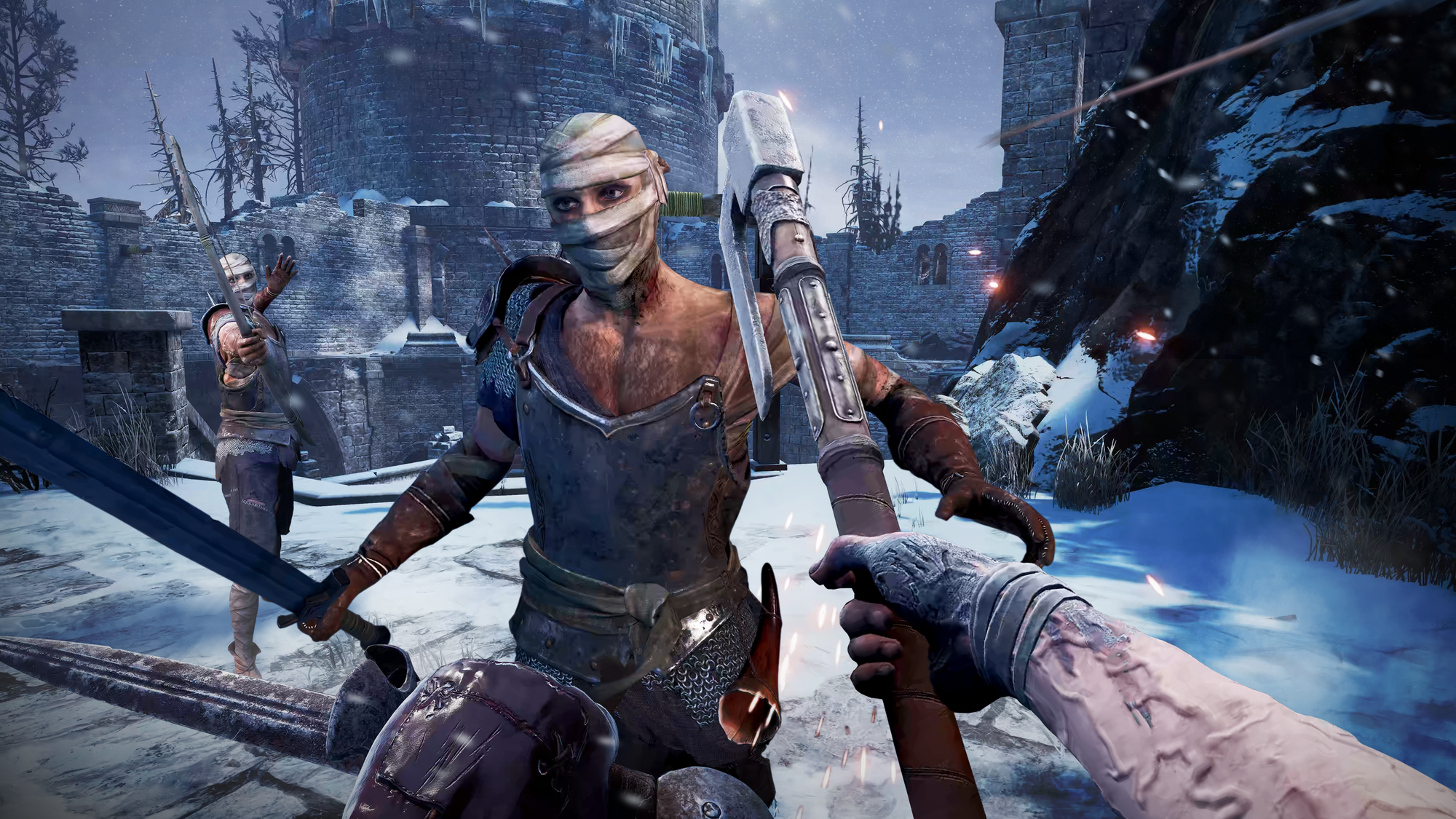
I was gradually introduced to a range of weapons and items throughout this demo, like axes and wooden shields. VR archery remains a personal favorite, so I mostly stuck to the bow and arrow for ranged foes. The two-handed sword creates an interesting dilemma where I could prioritize attacking power over defense; naturally, you can’t hold a shield alongside it.
I eventually found a mini-boss, presenting a more challenging human enemy with a brief cutscene that unfolds around you while disabling your weapons. “It would be dishonorable if you attacked him while he was taunting you,” Skydance told me. This largely feels similar to normal encounters, the big difference being larger health bars and unblockable attacks that forced me to take evasive action.
Outside of combat, Behemoth seeks to reward exploration with collectible resources. This demo mainly provided herbs used for crafting healing items at stations, which came in handy near the end. You won’t need to go scavenging for food or warm shelter, though; it’s not a survival game. Save points are also scattered across the map and provide regular healing.
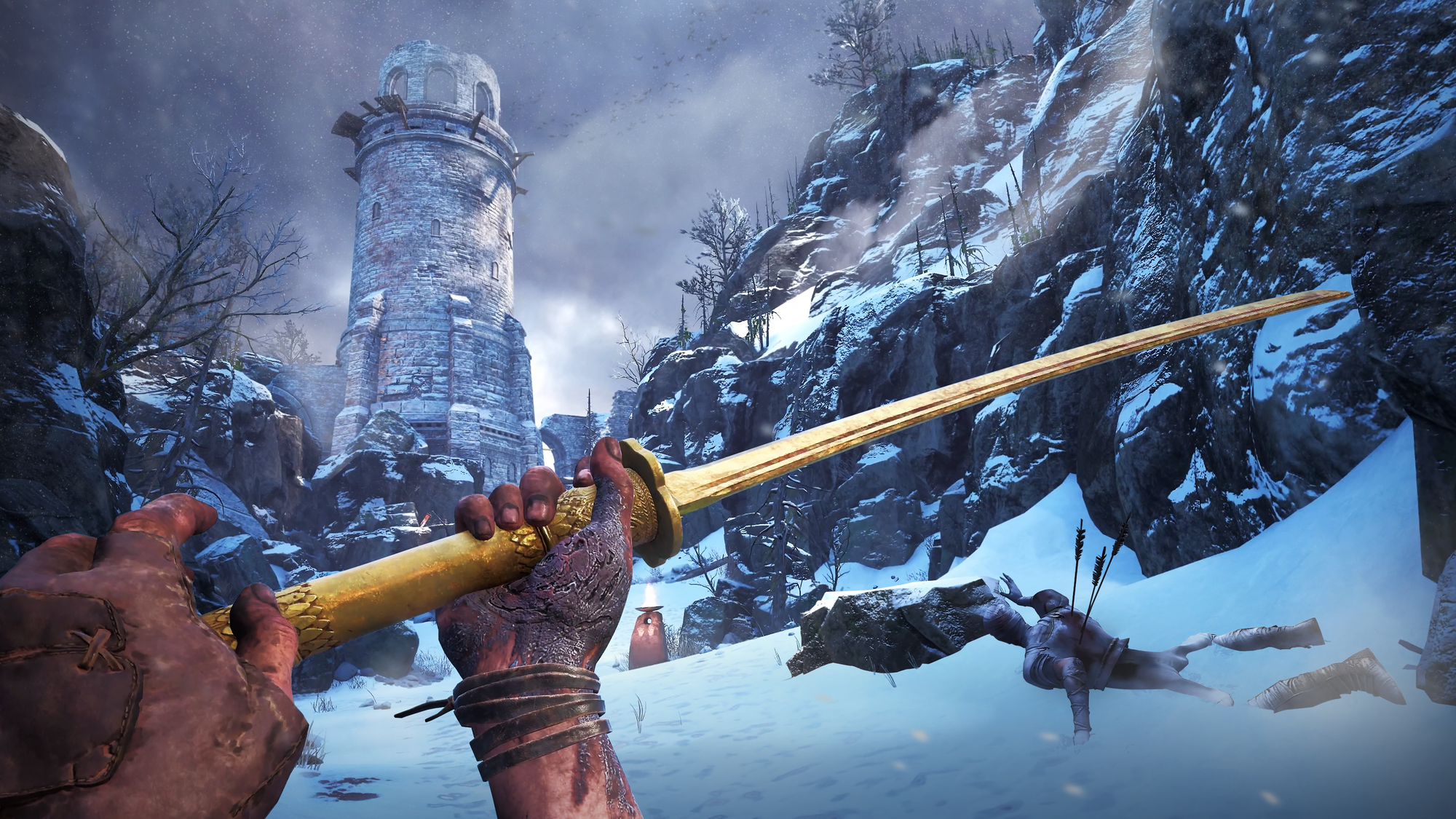
Exploration isn’t limited to just walking, either. Your character is armed with a grappling hook used for wall running, climbing up to new areas, abseiling down from your location and pulling down obstacles. Using the grapple to pull enemies off a cliff edge to their death was pretty fun, though this part didn’t always work as intended in the demo.
There’s considerable environmental storytelling on display, too. Skydance’s Behemoth takes place across a fallen kingdom that succumbed to a curse, and a rot continues plaguing this land. It’s an interesting detail that sets the tone well for this harsh world, contrasting well with this sometimes beautiful yet deadly icy tundra.
Eventually, I encountered one of the titular creatures, and immediately appreciated what VR adds to the experience. Behemoth’s sense of scale in these fights is staggering. The titan felt considerably more threatening to me than any Colossi in Shadow of the Colossus. However, I didn’t have much time to take this in. I quickly ran for my life to avoid being crushed, either by its feet or by the giant boulder it dragged on a chain.
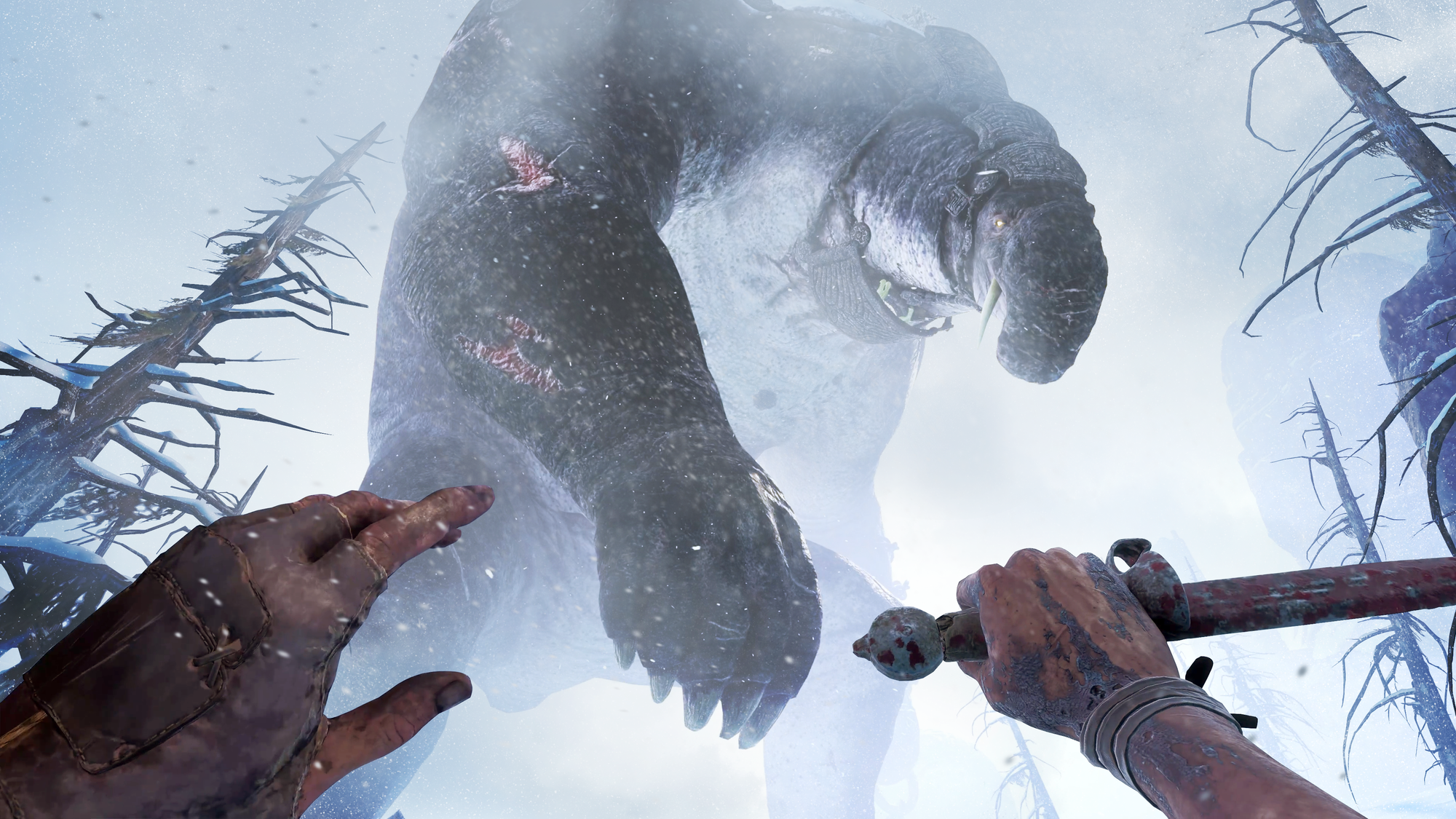
A challenging fight ensued and my next step wasn’t always obvious. Detailing my exact strategy would give away gameplay spoilers, but I had to carefully assess the behemoth’s weak spots, using several tricks in my arsenal to eventually slay the creature. Crafting those medications beforehand got me through this fight on my first try and taking the win was really fun.
Once the main demo ended, I briefly tried the sandbox arena mode that continues spawning new enemies. I didn’t play for long, though I appreciate this letting me get creative with different traps. Springing a set of rolling boulders toward a group of enemies was satisfying, though I’m personally feeling more drawn to the campaign.
I came away from this PSVR 2 preview highly impressed – feeling like I had seen a strong contender for game of the year shaping up here. Between an appealing presentation and satisfying yet brutal physics-based combat, it’s demonstrating strong VR-first design with an impressive sense of scale that you couldn’t replicate on flatscreen platforms. Skydance’s Behemoth put on a convincing show.
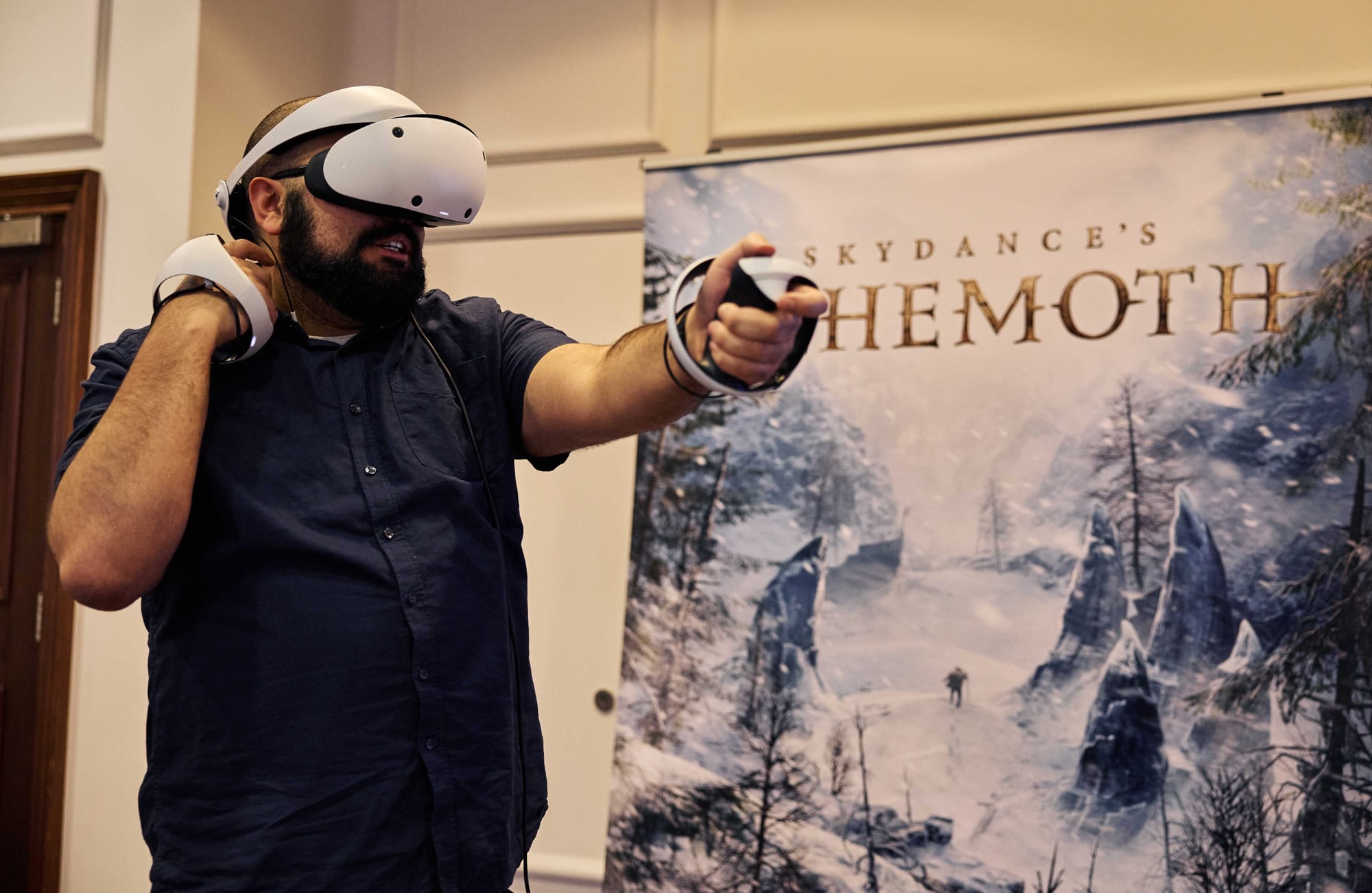
Following my hands-on, I sat down for a Q&A session with Shawn Kittelsen, Vice President of Creative for Skydance’s Behemoth. Diving into details I didn’t see in this demo, there won’t be any Blade and Sorcery-style magical attacks or “Jedi stuff,” but Kittlesen says you’ll find a wide range of weaponry, like different axes, daggers, swords, and more.
He didn’t wish to spoil everything, though I’m told there are three ‘Hero Weapons’ that can be customized cosmetically and tailored to your playstyle using a skill tree.
“If you want to do lots of damage, or you’d prefer to keep it at lower damage but remove the stamina drain, you can do either.”
Asking how Skydance Games went from zombie adaptations to an original game, Kittlesen believes the reception to Saints and Sinners gave the team “credibility in the VR space.”
“We didn’t want to be known as just The Walking Dead, Saints & Sinners studio. We thought, “What’s something different we can do?” We wanted to keep the physics-driven melee combat. People like the feel of it, so retaining that was key, but Walkers are not very smart enemies. Here, you’ve got human enemies that are on your level with meleeing you and that became the core of the combat system.”
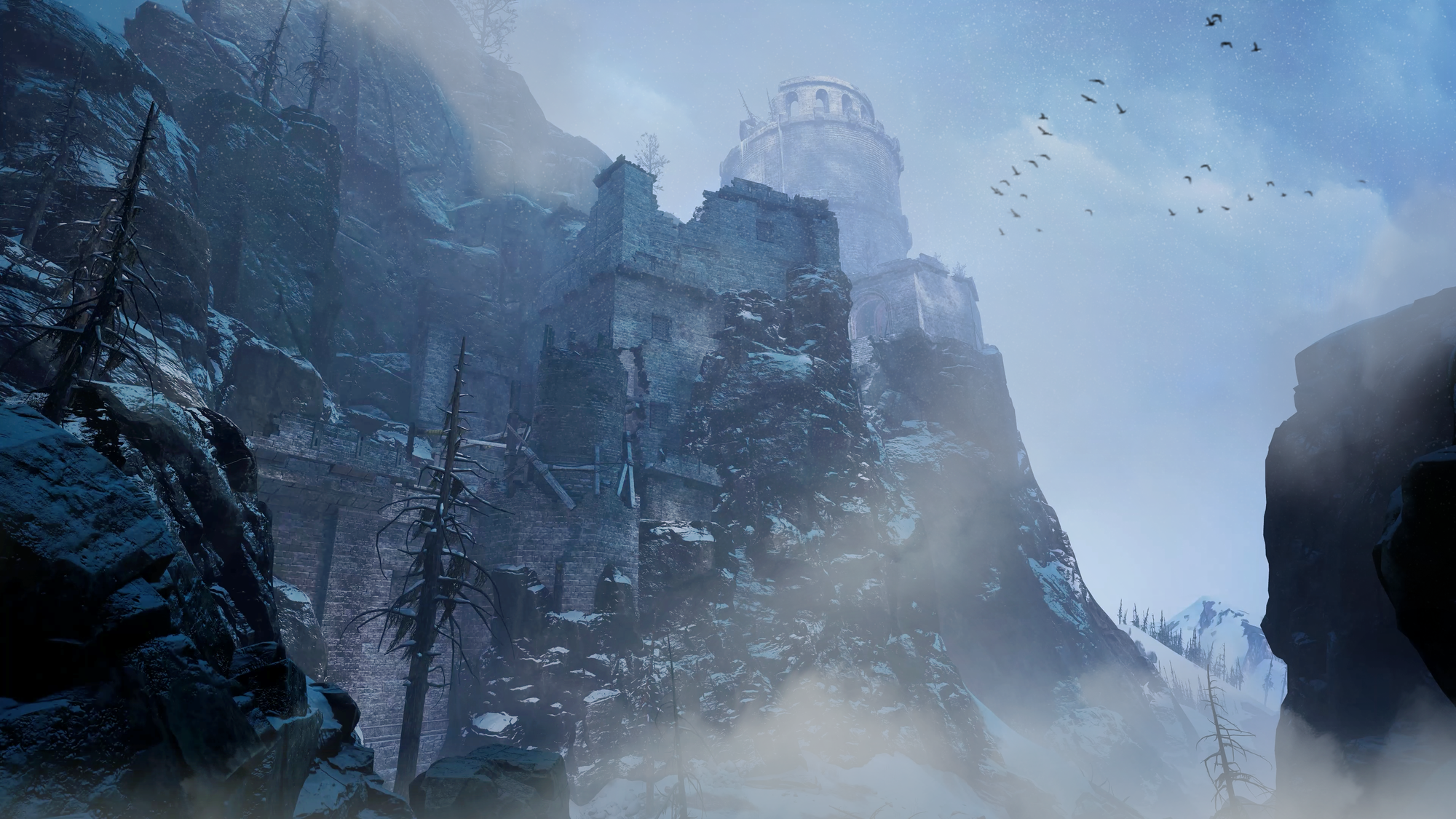
I’m told you have the same avatar options for your character as Saints and Sinners. However, your avatar does not have a canonical gender or skin tone.
“We want players to be able to identify with your character and live out any aspirational fantasy that happens in the game.”
Skydance Games is also carefully considering the sense of scale. Drawing upon comparisons to Shadow of the Colossus, I’m told they wanted to offer something in VR that flatscreen games can’t provide.
“You can see a giant thing on a flat screen and it feels giant. But seeing a giant being within VR is a whole different category of immersion. We wanted to do that and build a world where you would fight giant monsters.”
Telling Kittelsen I couldn’t imagine playing Behemoth flatscreen, he agreed and explained that the team isn’t interested in making hybrid games.
“No shade against hybrid games because they bring people into VR, but some games are just better with VR, like Gran Turismo 7. When you play it, you’re like, “Why did I ever not play this in VR?” It’s not just the experience of this scale, it’s the physicality of fighting and traversal. Being able to look over your shoulder, move in one direction while you’re looking in another direction in 360°.”
As for campaign length, I’m told it’s roughly 12 hours long. He believes that many VR players don’t spend longer than 30-40 minutes in a headset, but Behemoth doesn’t take a mission-based approach like Horizon Call of the Mountain. Thanks to frequent save points, this creates a more seamless journey that still lets you proceed in bite-sized segments if you wish. I’m also told difficulty settings will be available.
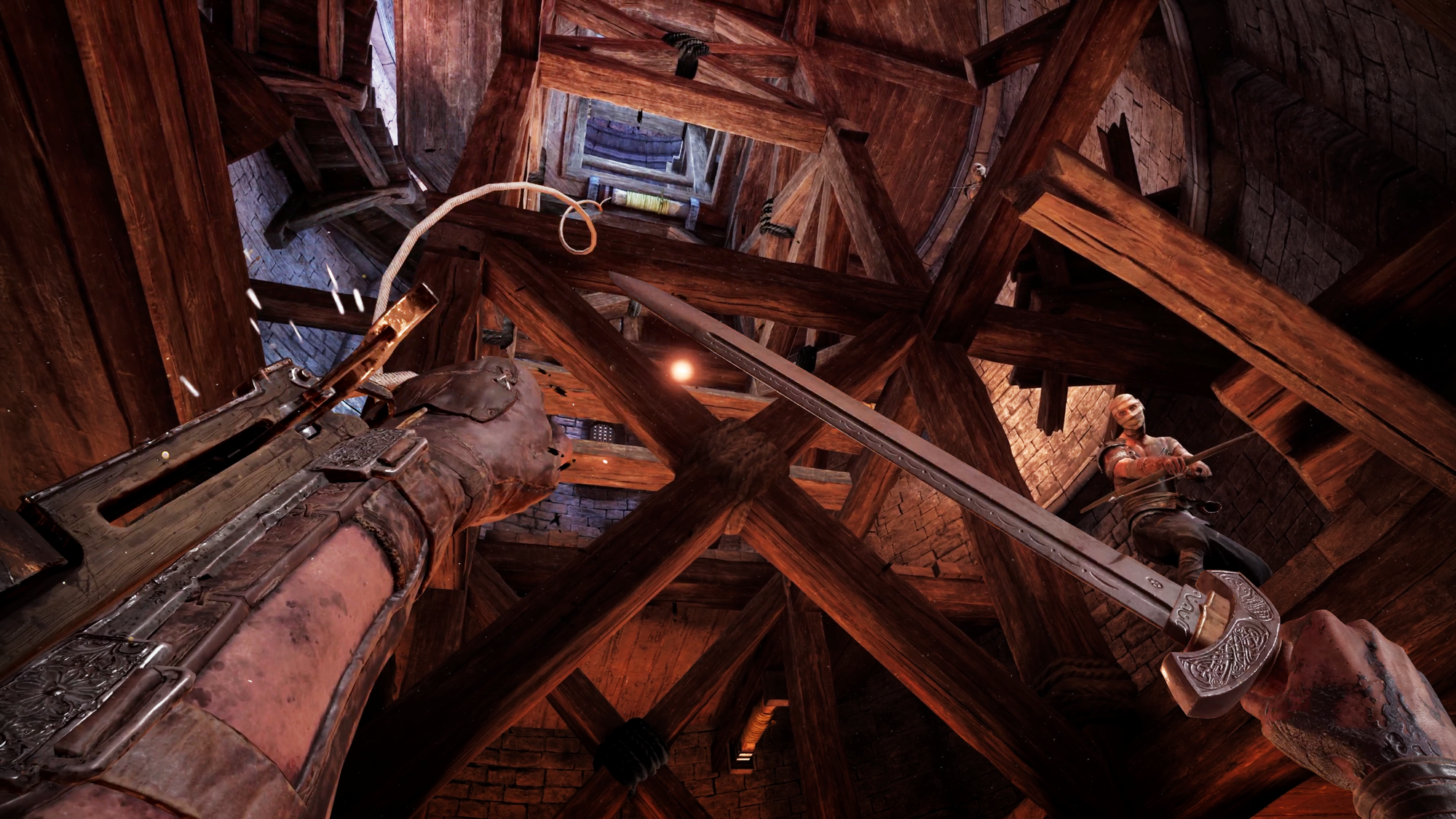
With platform differences, Kittelsen has one clear message: “From Quest 2 to PSVR 2, you’re getting the same experience.”
I’m told neither headset uses ASW or reprojection. Enhancements like higher-resolution textures will be available on Quest 3, though both Quest headsets target 72fps. On PSVR 2, Behemoth uses eye-tracking for foveated rendering alongside headset and controller haptic feedback. Skydance couldn’t confirm performance specifics, though I’m told the PSVR 2 version is comparable to playing on higher performance settings in PC VR.
Skydance’s Behemoth currently targets a fall 2024 release window on the Meta Quest platform, PC VR and PSVR 2.
